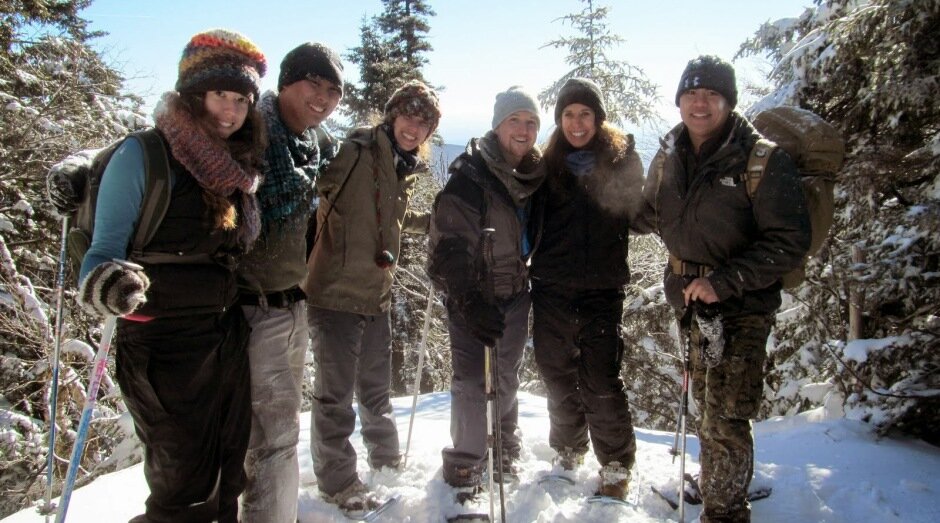New York Towns Pin Fiscal Hopes on Outdoor Recreation
About an hour north of New York City, sandwiched between Harriman State Park and Sterling Forest, is the sleepy town of Tuxedo–a hamlet of a few thousand residents encircled by abundant wilderness acreage and miles of hiking trail. While the area has long had residents, the downtown district is largely free of the retail and foodservice businesses that area residents believe would generate foot-traffic and the essence of a vibrant downtown district. This looked likely to change when the gambling conglomerate, Genting, unveiled plans for a massive casino complex in the heart of the area a number of years ago. When the NYS Gaming Commission rejected the location earlier this year, town leaders reinitiated a discussion on how to develop the area with an eye toward growth and sustainability.
As the Gaming Commission was deciding on the casino, a group, spearheaded by the Tuxedo Chamber of Commerce, began forwarding the idea of leveraging the area’s unique and stunning location amongst the hills of the highlands as a wilderness destination for New York City residents. And with Tuxedo’s convenient and central rail road station, the opportunities appear to abound. While they are at the outset of an ambitious plan to see the downtown transitioned into a hub for outdoor exploration, excitement and interest is high, both within Tuxedo and outside.
To the north, in the heart of the Catskill State Park, another initiative is underway. The Catskill Adventure Tourism Summit, or CATS, was recently established to gather stakeholders from the Catskill tourism industry to increase collaboration between businesses and service providers. CATS is providing opportunities for businesses to meet, share ideas, and according to the group’s Facebook page, “…create a venue where business owners in the Catskills tourism industry can form collaborative partnerships, share information, and combine their efforts to grow and promote tourism, and the tourism industry throughout the Catskills.”
CATS was initiated to move the needle for regional economies across the Catskills. And while the details of this collaboration are being hammered out, discussions are already forming around regional transportation, building business partnerships through packaged offerings, as well as the future of retail in the Catskills. As the group gains visibility in the run up to their next gathering in April, more initiatives are certain to be promoted.
A five-hour drive from New York City, in New York’s Adirondack State Park, some residents are looking at wilderness-driven tourism through a slightly different lens–one that sees the park’s cultural, ethnic and economic diversity (or lack thereof) as chief impediments to tourism and, therefore, protection. At an August symposium, Toward A More Diverse Adirondacks: Increasing Human Diversity throughout the Hudson River Watershed, Peter Nelson, the event’s co-chair, offered this rationale for the gathering. “The purpose of this symposium is to explore diversity and the Adirondacks… in order to recognize and better understand it, to discuss strategies for reducing the diversity gap and finally to forge a regional commitment to actively address diversity issues moving forward for the mutual benefit of the Adirondack Park and the people of New York State.”
For Nelson and others, a desire to protect the park must begin with experiencing the park. And those least likely to experience the park are the people who have been systematically excluded from it. A vibrant Adirondack economy requires growth; what better way to serve that need than by reaching out to the broad and varied populations of New York’s urban centers.
While these three initiatives differ in approach, they all speak to a similar goal: the aim of growing regional economies by accessing a broader segment of the state’s population. And seeing as how the market for outdoor pursuits has continued to gain steam across the United States, these plans appear well-targeted, aptly timed and within the scope of what’s possible. For these groups and the many others pinning their regions’ economic future on outdoor recreation, a next crucial step will be widening the visibility of their campaigns through social media, online marketing, email newsletters, structured events, informal social gatherings, and the myriad other strategies that budget-conscious organizations and businesses use to expand their community and their impact. For in many ways, their success depends as much on reaching those outside the local area as it does on activating the community within.
Photo Credit: Destination Backcountry Adventures

